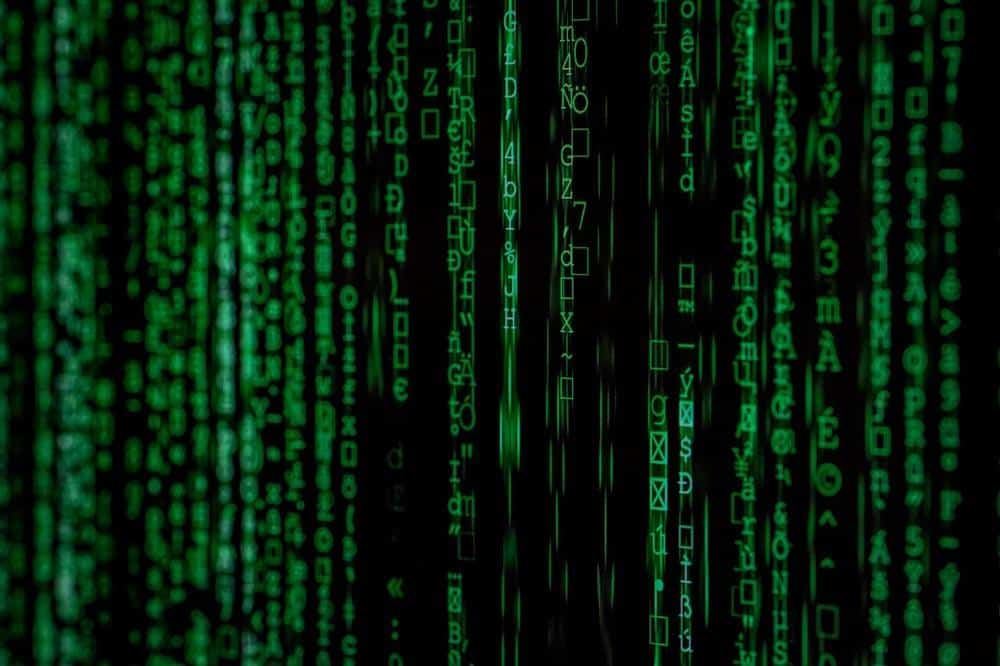For crypto gamblers getting up to speed on all the latest developments in blockchain and cryptocurrencies, we share some information about Polkadot. One of the latest blockchain protocols connects various specialised blockchains into a single unified network. It was designed to dismantle internet monopolies and was envisioned to return control to individuals on a decentralised platform.
The Polkadot system operates in a distinctive manner that aims to combine a network of heterogeneous blockchains, commonly referred to as parachains and parathreads. These parachains and parathreads are secured and connected to the Polkadot Relay Chain. In some circumstances, these chains are connected to external networks through bridges. This enables the Polkadot system to enjoy additional flexibility.
Main Components Of The Technology
Relay Chain
The core element of Polkadot’s operations is the relay chain. This critical element is responsible for its shared security, cross-chain interoperability, and consensus.
It is important to note that two single-responsibility mechanisms can achieve consensus on the Relay Chain. Each of these mechanisms makes vital contributions to the network. The first mechanism covers block production, while the second is responsible for accomplishing finality.
Parachains
Parachains can be described as sovereign blockchains and are networks that possess their tokens. Often, these networks are optimised for specific types of uses.
With parachains, they have the freedom to create their governance mechanisms. This facilitates maximum freedom on the network without interfering with the operations of other parachains.
Parathreads
Although parathreads operate very similarly to parachains, there are some minor but notable differences. Parathreads operate on a pay-as-you-go model as it is more cost-effective. Due to the framework of this model, blockchains don’t need continuous network connectivity to function optimally.
Bridges
A vital element of Polkadot is called bridges. This component enables parachains and parathreads to connect and communicate with external networks such as Bitcoin.
Bridges help to increase the interoperability of the Polkadot network.
What Problems Does Polkadot Address?

The network was developed to address one of the most critical problems faced by the blockchain sector: interoperability.
With the market being in a state of saturated compartmentalisation, a need was identified to bring unison to various blockchains in operation. Blockchains’ essential function as separate information groups means they are limited when leveraging information possessed by other networks.
With Polkadot, the posts have been shifted as they aim to integrate various proprietary technologies. One notable function is that the technology can communicate data from private blockchains to public networks and vice versa.
Advantages Of The Network
Polkadot offers several fundamental advantages that enhance the vision of earlier blockchain networks.
Scale
When blockchains operate in isolation, their abilities are hindered as they can only process a limited amount of traffic. With Polkadot, however, it operates on a sharded multi-chain network. This enables it to process multiple transactions on several chains concurrently through parallel processing. This goes a long way in eliminating the congestion on legacy networks that only process transactions in a singular formation.
Furthermore, the power of parallel processing helps to improve scalability and creates the most suitable conditions for increased adoption and future growth. Parachains are these sharded chains linked to Polkadot as they operate on the network in parallel.
Specialise
In terms of blockchain architecture, they are all unique in composition. In light of this, blockchains often make tradeoffs to support particular features and use cases. For example, one chain could be optimised for a specific use case while another might be optimised for identity management. With Polkadot, however, each blockchain can have a unique design optimised for particular use cases.
Polkadot’s foundation on the Substrate development framework has allowed their team to create and customise their blockchain quicker and more efficiently. The result of this means that the network protocol is in a position to offer better services. Moreover, it can improve efficiency and security by omitting unnecessary code.
Interoperability

Through Polkadot, applications and networks can share information and functionality without relying on any centralised service providers whose data practices may not be entirely transparent.
Whereas other networks usually operate on standalone platforms, there is cross-chain communication and interoperability with Polkadot’s offering. This encourages more opportunities for introducing innovative services and enables users to transfer information amongst various chains.
Self-Governing
Communities can govern their network in terms of what they consider important. This, in essence, gives them a transparent share in the future operations of Polkadot’s governance network.
Teams can customise and optimise their blockchain’s governance to suit their needs, play around with fresh ideas, or swap pre-built modules for quicker deployment.
Additionally, blockchain governance models on Polkadot’s network can be refined and upgraded as requirements and conditions change with time.
Easily Upgradeable
Like most software developed, blockchains need to be upgraded to keep up with the times and address the different needs that arise through technological advancement. Upgrading conventional chains, however, are not as straightforward.
A hard fork is required to perform an upgrade with conventional chains. This creates two separate transaction histories that can divide a community into two parts. This process can take a matter of months. On Polkadot, forkless upgrades are possible, enabling blockchains to transform and adapt comfortably as more improved technology becomes available.
When all of these core features are taken together, this provides an abundance of opportunities for new services that give individuals complete control of their digital lives. Teams are creating impactful solutions on behalf of the network for various applications that include finance, digital identity, crypto gambling, supply chain management, social networking, and cloud technologies.
Web3 Foundation is the organisation that spearheads the development of Polkadot, and they have provided fantastic support towards its advancement. Their contribution helps fund projects at all stages of the Web3 technology stack, including low-level infrastructure and ecosystem components like parachains, bridges, wallets, and tooling.
Evolution Of Polkadot’s Framework

Polkadot has laid the framework for an evolving decentralised network that comprises a dynamic ecosystem of interconnected yet independent blockchains, each with its specialisation. This framework serves as the foundation for a new trajectory of decentralised networks. This is illustrated in the following ways.
Design Of Trust
The digital infrastructure of Polkadot protects users’ interests through its design. There is an inherent privacy protection and no need to trust service providers to act in good faith with your information. The protection is effortlessly executed in the background of the apps being used.
This means going forward, users may not even be aware that they are engaging in blockchain-based services. The infrastructure is open and verifiable, creating trust with its users.
Accessible Financial Services
While financial services were traditionally reserved for a select portion of society, there are now impactful financial services and access to wealth-creation platforms available to a greater part of society. These manifest as decentralised and peer-to-peer alternatives to traditional financial service providers. With Polkadot’s network, there is greater access for users to engage in financial services.
These improved platforms are highly secure, user-friendly, and designed for users to participate and benefit.
Represented Interests
Regarding Polkadot’s framework, trade networks and economies are more representatives. This makes it a more efficient platform that is beneficial to all users. Services will no longer extract users’ value without reciprocating proportional value. Users can find comfort that it will not be exploited as community-owned alternatives provide more value and embrace the freedom of choice.
Polkadot has facilitated new categories of services that encourage new markets with improved opportunities and possibilities.
Communication and Collaboration
Polkadot’s platform is reliable, open-source, and peer-to-peer, and this aids greatly in the improvement of communication and collaboration. This creates powerful avenues for users to collaborate with the need to rely on central authorities. This, in turn, leads to an abundance of innovation without restrictions.
Users who wish to start and develop their projects and businesses will benefit immensely through this decentralised economic model that lowers the entry barrier for individuals and communities. Moreover, this enables people from all over the world to work together more efficiently.
Governance Of The Network Protocol

Polkadot employs a multi-layered governance model that enables the protocol to be updated without resorting to hard forks.
The system is designed to integrate transparent on-chain voting to promote a cohesive community.
The Polkadot community comprises two distinct groups: Council Members and the Technical Committee.
Council Members
These members are elected to represent passive stakeholders and serve two primary roles. They can propose new referenda in the network and vote down proposals that they view as cost-prohibitive or dangerous.
Technical Committee
This committee comprises teams that are actively involved in the development of Polkadot. Their duties entail proposing emergency referenda. Their function is particularly helpful in fast-tracking voting procedures and implementing vital upgrades to the network.
Polkadot’s Consensus Mechanism
In terms of consensus mechanisms, Polkadot approaches it differently. It employs a consensus mechanism called GRANDPA (GHOST-based Recursive Ancestor Deriving Prefix Agreement).
GRANDPA enables Polkadot to facilitate a more secure platform with greater resilience. More specifically, it enables networks to pool security, and the additional protection is aggregated and applied to all.
GRANDPA Explained
Compared to earlier-generation cryptocurrencies like Ethereum, GRANDPA is extremely scalable and offers a major upgrade. This system generally offers almost instant confirmation times, with transactions completed in under a second.
GRANDPA has introduced some new roles to the consensus mechanism to facilitate such efficiency. These are explained below:
- Nominators – these are responsible for securing the Relay Chain and are required to choose reliable validators and stake dots in the Polkadot ecosystem.
- Validators – these are responsible for securing the Relay Chain and perform this task by staking dots, validating proofs from collators, and actively participating in consensus in conjunction with other validators within the platform.
- Collators – the main objective of Collators is to maintain shards by gathering shard transactions from users. Once they have gathered that information, they typically produce proofs for the validators.
- Fisherman – these are unique monitoring protocols that monitor the network and report any bad behaviour to the Validators. Collators and Parachain Full Node can perform this function on the Polkadot ecosystem.

Technical Specs
Polkadot was developed to simplify ordinary programming tasks commonly associated with DAPP development. It was created using Substrate as the ideal option to simplify creating, implementing, improving, and experimenting with various application-specific blockchains.
Through this integration, developers could focus their attention on innovation instead of the mechanics of developing and operating a blockchain. Integrating a flexible cross-platform network for peer-to-peer applications is referred to as libp2p.
The combination of libp2p with a runtime environment enabled developers to code in various languages, thus improving on Ethereums original framework.
Buying Polkadot
Polkadot, commonly referred to as DOT, can be found on several reputable exchanges in the market. You will not find direct fiat to DOT trading pairs, so you must load fiat currency and transfer it to Ethereum or Bitcoin. Once that is done, you can trade these cryptocurrencies directly for DOT.
The Bottom Line
With Polkadot’s ecosystem growing significantly, its unique design enables projects to have greater possibilities for innovation and flexibility. Polkadot contributes immensely towards blockchain technology reaching its full potential by unifying many specialised chains into a single scalable network.
This, in turn, opens the door to new markets and forges a bright new path for future decentralised economies. The future of decentralisation does, indeed, look bright with Polkadot’s vision on this upward trajectory.

















